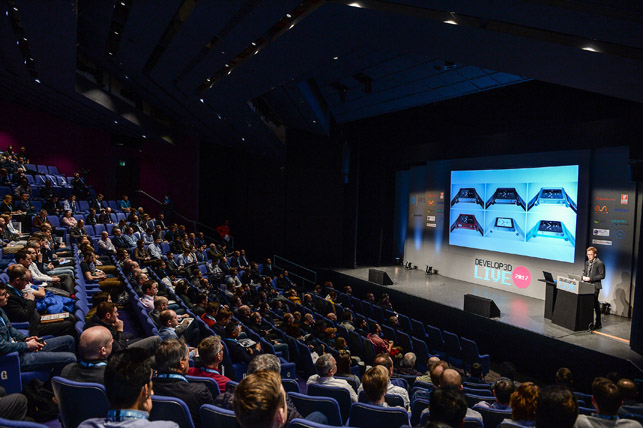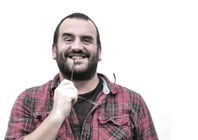User events are common across the CAD industry. Al Dean looks at why they remain a favourite in the calendar and provides a few tips on how to get the most out of them

Dustin Brown of Microsoft, talking how his team approaches industrial design at last year’s DEVELOP3D
Let’s be absolutely frank here. Most people think my job consists mostly of flying around the world, on someone else’s dime and reporting on various events that take place throughout the year. I’ll be the first to admit that this probably does seem like the case from a cursory glance (certainly, my friends and family seem to think so).
The reality is that the vast majority of the year is taken up sitting in an office above a car mechanic’s workshop in Wolverhampton or schleping up and down the M40 or M6, with the occasional trip overseas to a user conference. But even the reality of those overseas trips means a long flight, followed by four days of sitting in a convention centre watching Powerpoint after Powerpoint slide by. Occasionally, we get to break out of the event location and find a good spot, preferable with outside seating, and have a bit of fun.
So what is it that makes user conferences interesting and how could you make the most of the experience?
The answer is pretty intangible, but if I had to nail it down to one reason I’d put networking and learning at the top of the agenda. I suggest this should be the reason you give your boss when trying to get him/ her to sign the trip off.
As designers and engineers we tend to be isolated in our work. Yes, we work as part of a team and often with team members outside of our organisations, but that team is focussed on a single goal and a single set of products and task at hand. And, as a result, pretty myopic in nature.
This is perhaps the biggest benefit of attending one of the hundreds of user conferences out there. You get to widen your gaze and widen the range of your learning.
Alongside the usual software demonstrations and pitches, the sessions at these things are typically a host of users talking about how they do their jobs. Sit in one of those that’s outside of your precise field and I guarantee you’ll learn something new that can be applied to how you and your team work.
Then, of course, there’s getting an insight into your chosen software tool’s future strategy. That insight allows you to make decisions on what might be possible down the road and steer how you use the tools you have today. To use the cliche, forewarned is forearmed.
If you’re going to take the decision to attend, throw yourself into it, sit at the tables at lunch and have a chat with other folks. That was always something I struggled with when I started, but it’s worth the effort.
Finally, don’t forget a couple of other things. First, keep yourself hydrated. Conference centres, particularly in the US, are overly air conditioned and you’ll be drier than a rich tea biscuit in minutes. The other thing is shoes. Don’t go for smartness or fashion, but always comfort because you’ll be racking up the miles (to give you an idea, on average, a day at Autodesk University in Vegas is 13+ km of walking).
While this is all well and good, there’s also an issue with user conferences. You’re getting a view of the world that’s effectively controlled by a single software vendor. They control who presents, who exhibits on the show fl oor and what you get to see.
This is where the idea for DEVELOP3D Live came from. To give designers and engineers a chance to view the latest and greatest from all of the players in the game. In a single day, they can see what the state of play is. We also wanted to mix in some peer learning and inspiration.
This year, we’ve got an interesting show brewing for you on 20 March 2018 at Warwick Arts Centre (click here to read preview). Our keynotes are Mouse McCoy from Hackrod, who we featured in our July/August issue last year. Having got to know Mouse over the last few months, you have to see his presentation to believe how it’ll leave you feeling. Then we’ve got Lucid Motors, an electric vehicle start-up that is looking to take on the luxury vehicle market with some amazing engineering combined with absolutely radical thoughts on the future of transportation.
There’s much more besides. See you there!

Al Dean’s been to most of them. Here is his advice
Default






